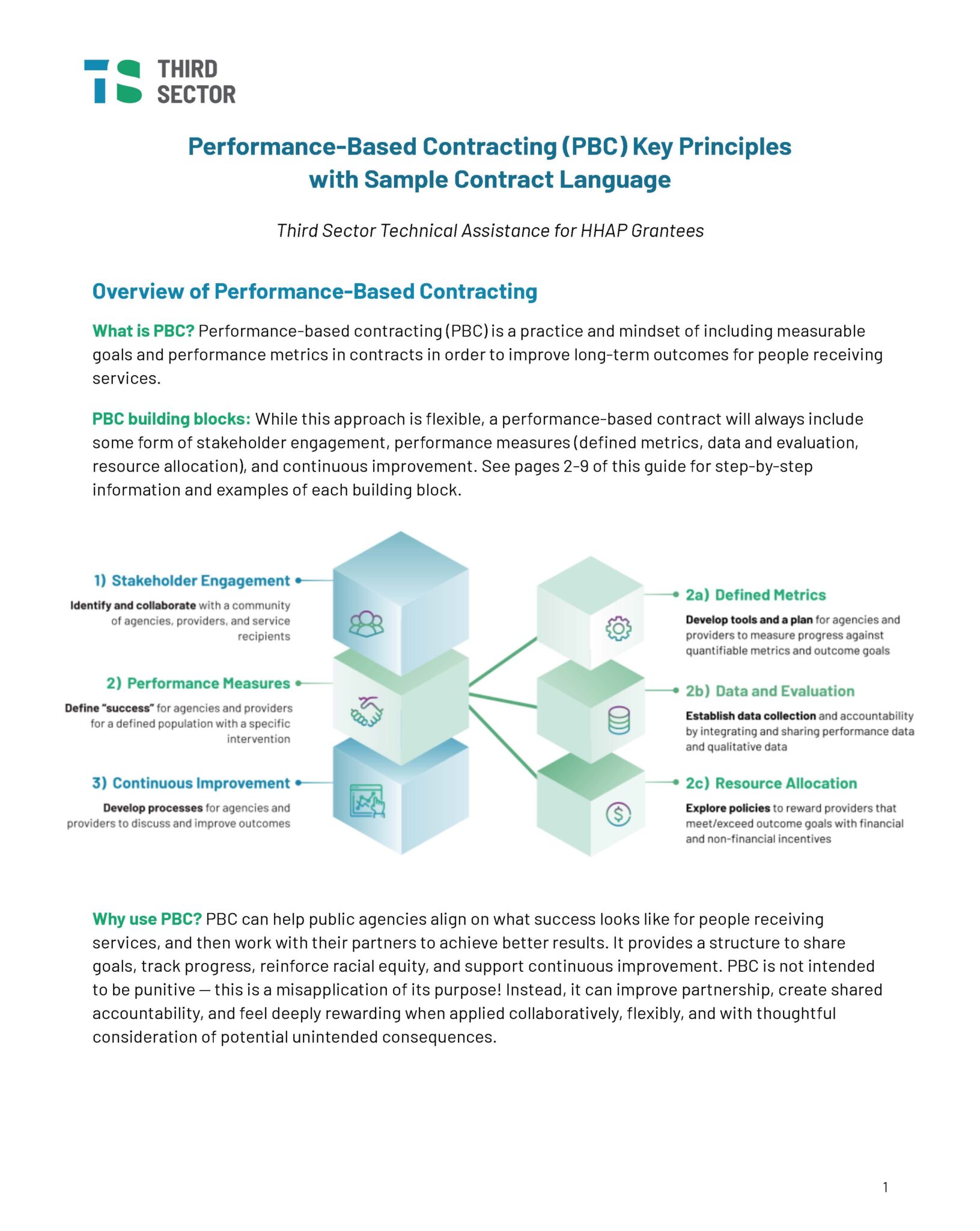Inside California’s System Change Efforts to Address Homelessness: Four Recommendations for Other States Looking to Do the Same
As the nation continues to grapple with a terrible homelessness crisis, the state of California continues to improve coordination of its housing services across numerous agencies and jurisdictions. We at Third Sector helped to facilitate this effort by working with the California Interagency Council on Homelessness to develop a process to help the council and California’s 58 counties manage their resources toward specific results and adopt continuous improvement strategies. At Third Sector, we call this an outcomes-focused approach to government.
Building more tools and practices to increase accountability in California remains a priority since the nation’s largest homeless population of 180,000 residents continues to grow despite investments of billions of federal and state funds. While the state is successfully housing 35% of people who receive homelessness services, an equal portion do not secure stable housing. Roughly 17% return to homelessness and the whereabouts of another 25% of residents are “unknown.”
For nearly two years, Third Sector advised the California Interagency Council on Homelessness (Cal ICH) on creating a more outcomes-focused culture for its staff and county partners. It is a shift that requires government staff to ask more about what happened after housing services were delivered (who was stably housed, when, and for how long) and which resources could be shared across departments (funding, data, and policies) within a specific time frame to serve constituents seeking services better.
Third Sector supported Cal ICH on two work streams: (1) building local capacity to use performance-based contracting for its multi-billion dollar Homeless Housing Assistance and Prevention (HHAP) block grant program and (2) improving collaboration within the state’s homelessness funding and program workgroup represented by 13 state departments.
This work was complex and dynamic, and after conducting this work, Third Sector has four recommendations for any state looking to address homelessness through cross-agency collaboration and stakeholder engagement:
- States Should Invest Time to Prioritize and Build Consensus Across Departments: Housing and homelessness departments must seek space for targeted facilitation and trust building to prioritize action items that shift program requirement coordination, new practices and data-sharing structures, and continuous improvement. Yet, staff are constantly pressed for time and focused on meeting yesterday’s priorities, which prevents them from doing this work.
California recognized this capacity challenge while seeking agreement on how to implement its published Action Plan for Preventing and Ending Homelessness for 13 departments on its State Funding and Programs (SFP) Working Group. This dilemma also meant that the body had 10 different ways to oversee and fund housing and homelessness programs. Third Sector facilitated a process for departments to educate each other on near- and long-term priorities and staffing constraints. With a shared understanding, they built consensus on select objectives and activities the SFP working group could control within 12 months.
2. States Should Embrace Performance-Based Contracting Strategies to Improve Responsiveness and Accountability to Outcomes: State departments should establish ambitious yet flexible success metrics and compensation measures so that counties and cities can nimbly meet the challenges of their service providers and homeless communities.
Cal ICH provided Third Sector’s technical assistance at no cost to county and city governments that receive state HHAP funding to improve contracts with service providers. Third Sector allowed local staff to think beyond a “bang-for-my-buck” framework by standardizing practices for more than 60 local governments and their housing and homelessness service providers. This work included embedding state-defined metrics into service contracts, improving data-sharing practices, and increasing engagement efforts with individuals with lived experience.
3. States Should Standardize the Measurement of Demographic Disparities: To understand the full extent of disparities in service delivery and outcomes, all government agencies of jurisdiction should share data that they must disaggregate along a set of shared individualized factors (e.g., race/ethnicity, employment status, education, etc). Agencies should supplement that data with qualitative feedback from providers, practitioners, and communities and states must invest in local capacity to collect and analyze such data.
Third Sector developed a racial equity data action plan for the 13-agency workgroup to ensure the state can understand current unmet needs and set appropriate and standardized goals that each department subsequently measures.

4. States Should Embrace Peer-to-Peer Learning and Problem-Solving: Bureaucracies can help organizations run smoothly and efficiently by streamlining processes and bringing order to systems and procedures. However, they can also have problems such as red tape, conflict, and duplication. States should improve their processes and staff morale by prioritizing the needs and experiences of the “end users” of its systems, such as mid-level procurement and data managers or county administrators, to inform how to realign state expectations and directives.
For the multi-agency SFP working group, Third Sector created time in the working group’s agenda and developed materials to showcase how peer departments (e.g., Department of Health Care Services and Cal ICH) collaborated on improving funding applications and requirements. City and county grantees joined meetings to provide feedback to the state departments on how to make the HHAP application process less duplicative, more user-friendly, and more transparent. Shared learning and feedback resulted in a more collaborative mindset for the workgroup, which addressed administrative challenges faced by one of the most critical conduits of the homelessness response system: county and city staff.
